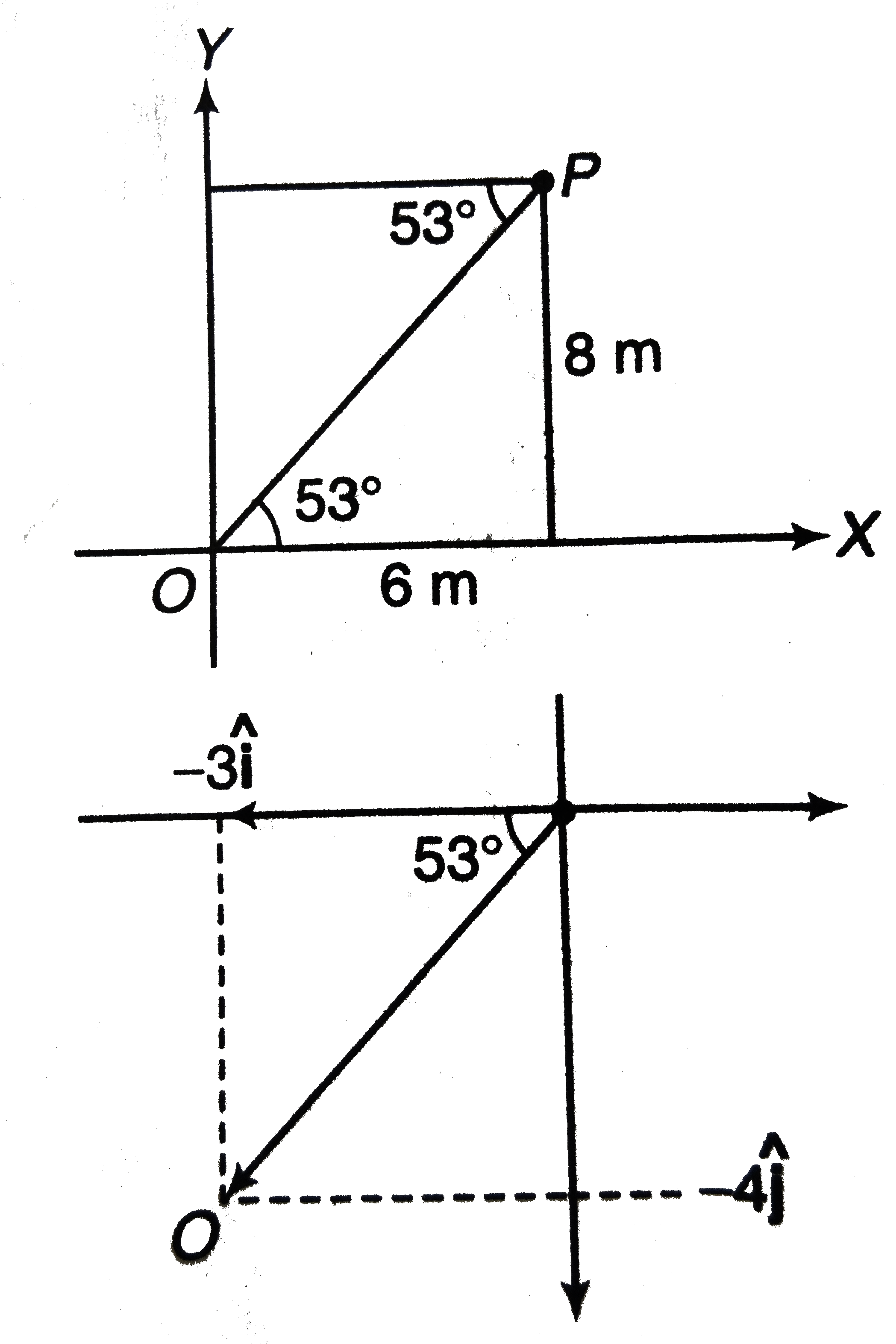The potential energy in joule of a particle of mass moving in x-y plane obeys the law, . Here, x and y are in metres. If the particle is at rest at at time 0, then the work done by conservative force on the particle from the initial position to the instant when it crosses the x-axis is .
The correct Answer is:C

Since, particle was initially at rest. So, it will move in the direction of force.
We can see that initial velocity is in the directon of PO. So the particle will cross the X-axis at origin.
or
Similar Questions
The potential energy of a particle of mass 5 kg moving in the x−y plane is given by U=(−7x+24y)J, where x and y are given in metre. If the particle starts from rest, from the origin, then the speed of the particle at t=2s is
View SolutionThe potential energy of a particle of mass 5 kg moving in the x−y plane is given by U=(−7x+24y)J, where x and y are given in metre. If the particle starts from rest, from the origin, then the speed of the particle at t=2s is
View Solution
Knowledge Check
- Question 1 - Select One or More
The potential energy U in joule of a particle of mass 1kg moving in x−y plane obeys the lawU=3x+4y, where (x,y) are the co-ordinates of the particle in metre. If the particle is at rest at (6,4) at time t=0 then :
Athe particle has constant accelerationBthe particle has zero accelerationCthe speed of particle when it crosses the y-axis is 10m/s.Dco-ordinates of particle at t=1s are (4.5,2). - Question 2 - Select One or More
The potential energy φ, in joule, of a particle of mass 1kg, moving in the x-y plane, obeys the law φ=3x+4y, where (x,y) are the coordinates of the particle in metre. If the particle is at rest at (6,4) at time t=0, then
AThe particle has constant accelerationBThe work done by external forces from the position of rest to the instant the particle crossing x-axis is 25JCThe speed of the particle when it crosses the y-axis is 10ms−1DThe coordinates of the particle at time t=4s are (−18,−28) (in m) - Question 3 - Select One or More
The potential energy φ, in joule, of a particle of mass 1kg, moving in the x-y plane, obeys the law φ=3x+4y, where (x,y) are the coordinates of the particle in metre. If the particle is at rest at (6,4) at time t=0, then
A(a) The particle has constant acceleration.B(b) The work done by the external forces, the position of rest of the particle and the instant of the particle crossing the x-axis is 25J.C(c) The speed of the particle when it crosses the y-axis is 10m−1.D(d) The coordinates of the particle at time t=4s are (−18,−28).
The potential energy in joules of a particle of mass 1 kg moving in a plane is given by U=3x+4y, the position coordinates of the point being x and y, measured in metres. If the particle is initially at rest at (6, 4), then:
View SolutionThe potential energy of a particle of mass 1 kg moving in X-Y plane is given by U=(12x+5y) joules, where x an y are in meters. If the particle is initially at rest at origin, then select incorrect alternative :-
View SolutionThe potential energy of a particle of mass 2 kg moving in a plane is given by U=(−6x−8y)J. The position coordinates x and y are measured in meter. If the particle is initially at rest at position (6, 4)m, then
View SolutionThe potential energy of a particle of mass 5 kg moving in the x-y plane is given by U=(−7x+24y)J,xandy being in metre. If the particle starts from origin, then the speed of particle at t = 2 s is
View SolutionThe potential energy of a particle of mass 10 kg moving in XY-plane is given by U=(−7x+24y)J, where x and y are in metre. The particle is initially at the origin and moving with the speed(2.4ˆi+0.7ˆj). The force on the particle is
View Solution

